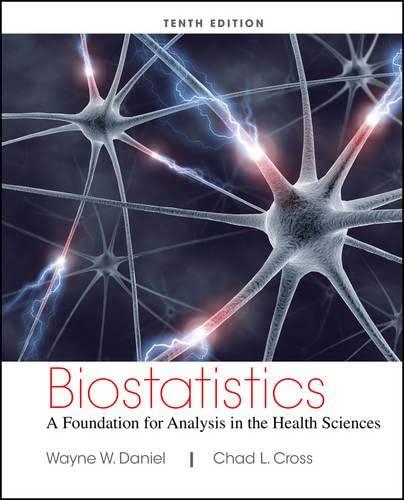The mean length at birth of 14 male infants was 53 cm with a standard deviation of
Question:
The mean length at birth of 14 male infants was 53 cm with a standard deviation of 9 cm. Can one conclude on the basis of these data that the population mean is not 50 cm? Let the probability of committing a type I error be .10.
For each of the studies described in Exercises 33 through 38, answer as many of the following questions as possible:
(a) What is the variable of interest?
(b) Is the parameter of interest a mean, the difference between two means (independent samples), a mean difference (paired data), a proportion, or the difference between two proportions (independent samples)?
(c) What is the sampled population?
(d) What is the target population?
(e) What are the null and alternative hypotheses?
(f) Is the alternative one-sided (left tail), one-sided (right tail), or two-sided? (g) What type I and type II errors are possible? (h) Do you think the null hypothesis was rejected? Explain why or why not.
Step by Step Answer:

Biostatistics A Foundation For Analysis In The Health Sciences
ISBN: 9781118302798
10th Edition
Authors: Wayne W. Daniel, Chad L. Cross






